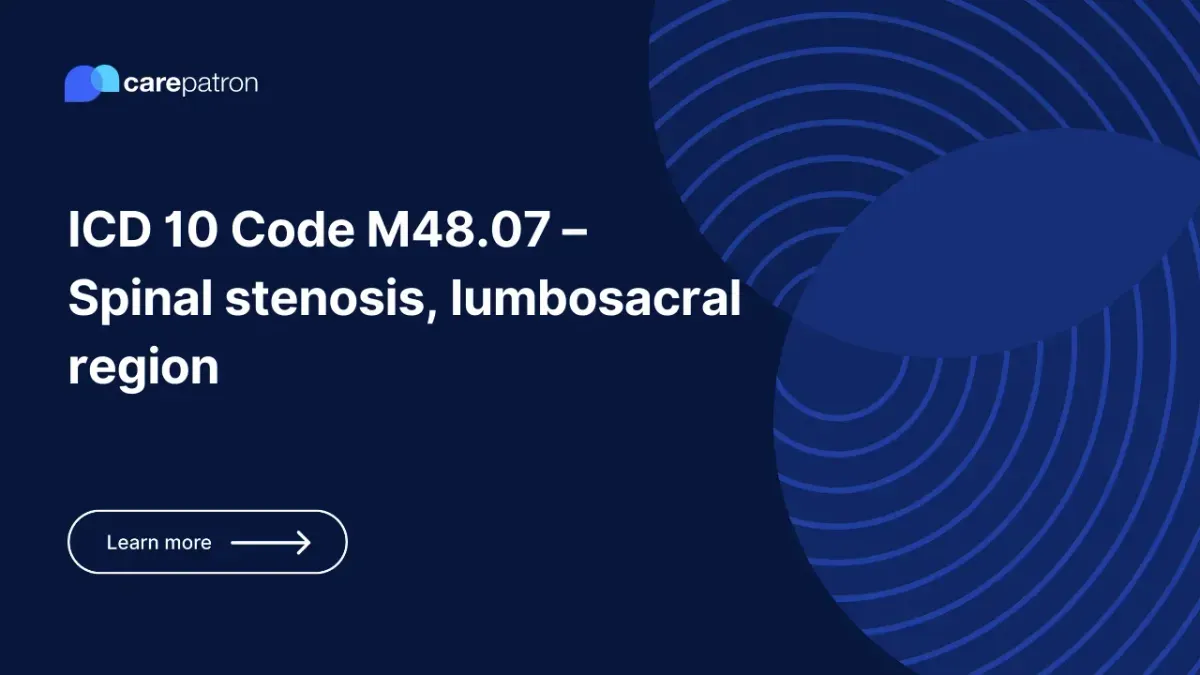
M48.07 – Spinal stenosis, lumbosacral region
Comprehensive guide to ICD-10-CM code M48.07 - Spinal stenosis, lumbosacral region. Learn about its clinical implications, synonyms, and related codes.
Use Code
Commonly asked questions
Patients often experience lower back pain, leg numbness, muscle weakness, difficulty walking, or balance issues.
Treatment options include pain management with medication and physiotherapy for strength and flexibility, and in severe cases, surgical intervention may be recommended.
While it can affect people of all ages, spinal stenosis, lumbosacral region is more prevalent in adults over 50 due to the wear and tear on the spine.
EHR and practice management software
Get started for free
*No credit card required
Free
$0/usd
Unlimited clients
Telehealth
1GB of storage
Client portal text
Automated billing and online payments
